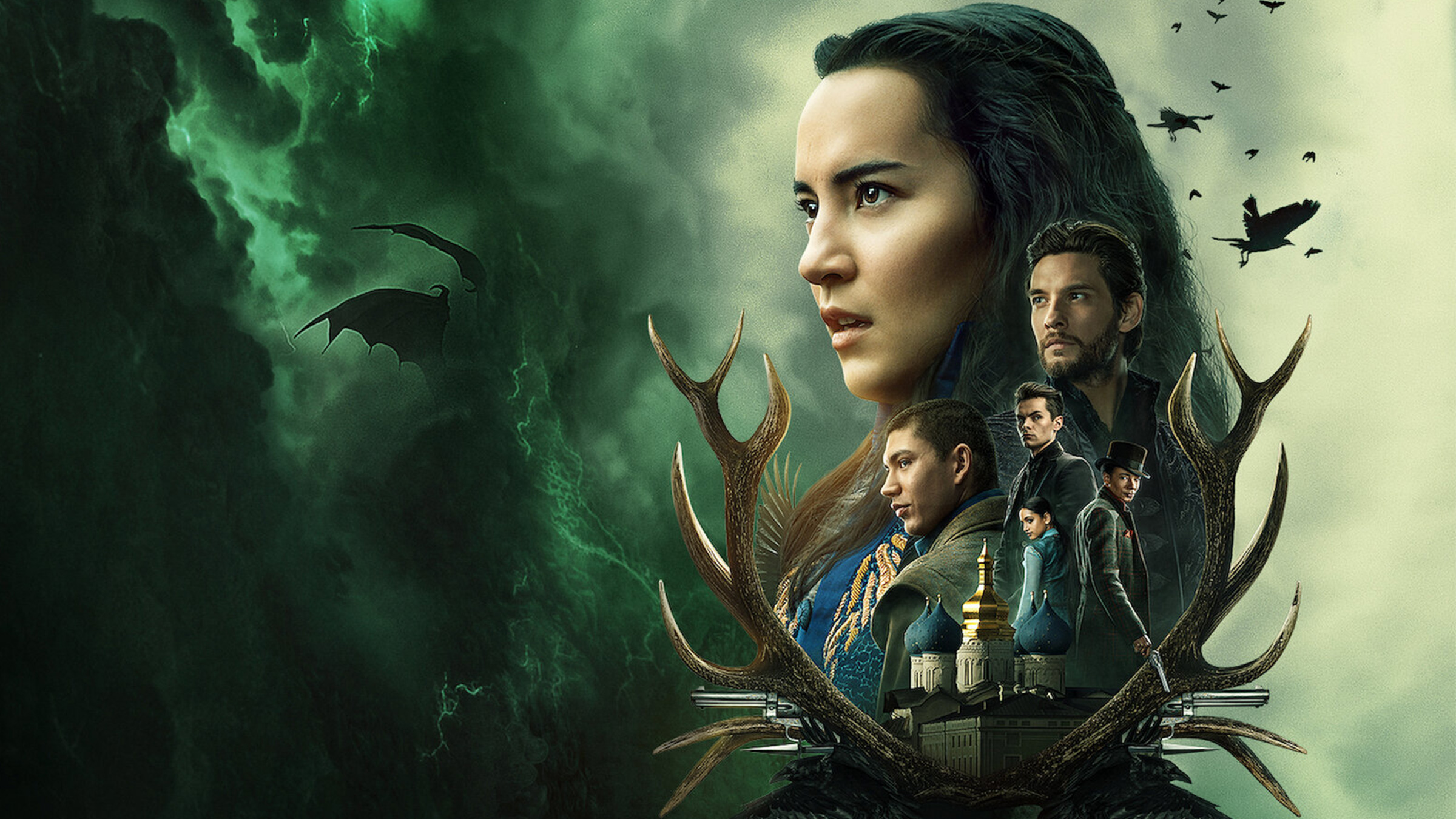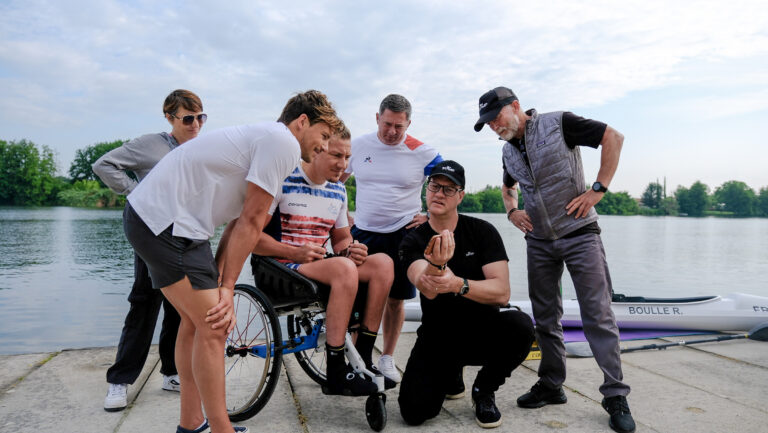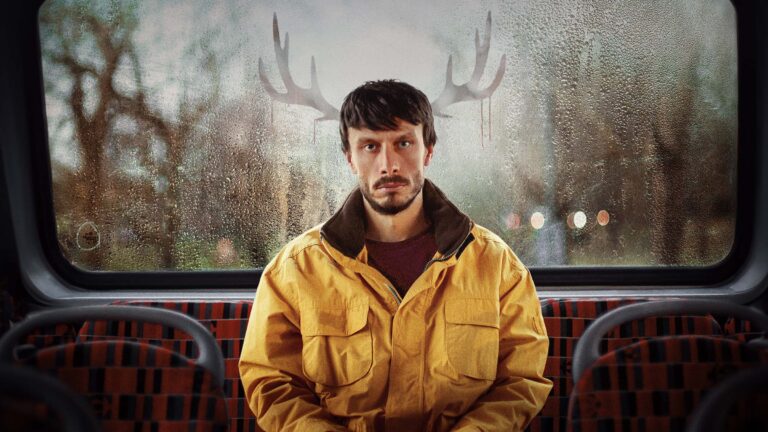When you’ve got documentaries for Sting alongside Guy Ritchie’s Lock, Stock and Two Smoking Barrels in your showreel, you’re obviously doing something right. Today, we’re talking with Niven Howie, ACE about editing the Netflix TV series Shadow and Bone, which was based on the 2012 novel of the same name.
Niven’s editing career started in the music video and high-end ad world. He was launched into feature films when he edited Julien Temple’s Bullet followed by cutting Lock, Stock and Two Smoking Barrels which was nominated for a BAFTA Award for Best editing. He received another BAFTA nomination for the TV series, His Dark Materials, and was also nominated for an Emmy for Paul McCartney’s concert film, Back in the US.
Other work includes features like Dawn of the Dead, The Hitchhiker’s Guide to the Galaxy, and Resident Evil: Extinction.
Listen while you read…
HULLFISH: I was looking at your IMDb page, and it looks like you started out with a lot of music videos back in the day. Tell me about making that transition from cutting really high-end videos—that I saw when I was watching MTV—to moving into narrative. Did you follow a director that got the chance to move to narrative work?
HOWIE: I started editing in the early eighties, and it was just before MTV kicked off. I was in a band in college, and I originally wanted to record music. That was something I loved. I loved our evenings or weekends in the studio playing with the mixer. Back then it was all analog. I knew a little bit about basic electronics, I built my own reverb unit, stuff like that. I was a guitarist.

I got sucked into working at a video rental facility that was just starting out. I had a go with a camera and all sorts of equipment; I was quite good at setting up video projectors. Our main clients were the big advertising agencies in London: JWT, Saatchi and Saatchi, that kind of thing.
Finally, they bought a little two-machine three-quarter-inch edit set-up, and I had a go with that. I loved it, so I quickly left and got myself a job at one of the Soho boutique post-production facilities. They’d just taken on a well-known color-grader who was grading music videos: The Cure videos and all that in the eighties. I navigated myself into that area, managed to do a few freebie music videos, and finally got a few regular clients. I caught them at the right time just before we all took off.
I was doing one or two a week, and one of my main clients—after I really found my name there—was Julien Temple. He started off bringing his rough-cut music videos to me to add dissolves because I’d set up my own facility that had computer-controlled three-quarter-inch machines, three of them with a Grass Valley 100 Mixer. I could add dissolves and create EDLs, and there were only two offline facilities in London at the time that offered that. He brought me two videos to add dissolves to, but he realized that he wanted to actually give me the whole edit in the end.
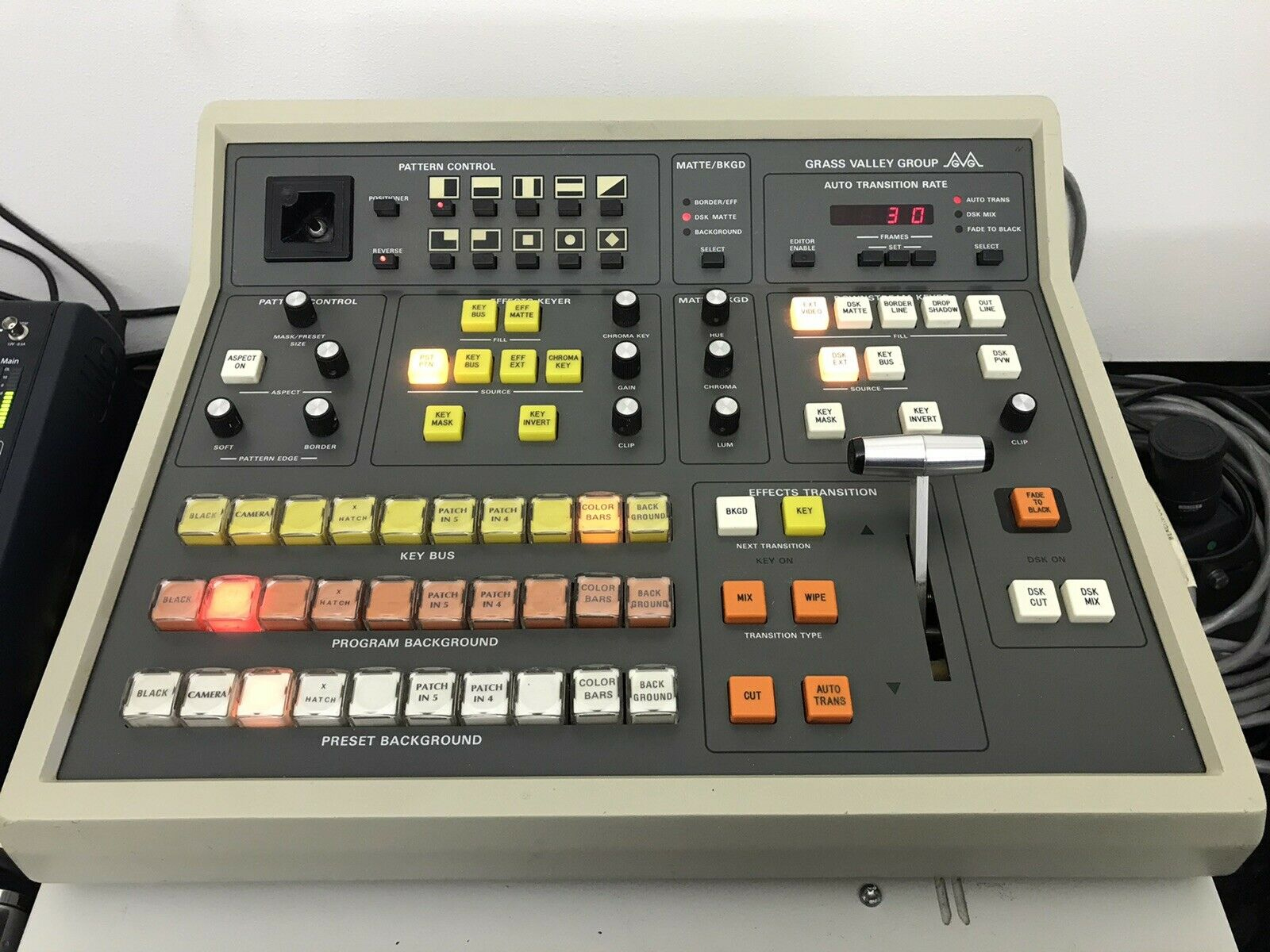
I had a great period of time editing some of those videos he was doing for Duran Duran and Mick Jagger, and then he got a movie off the ground. It was his third movie. He’d had an unpleasant experience on his previous movie where the editor wouldn’t allow him to look at dailies or alternative takes. I’d already been cutting short films and TV dramas, so I had some dramatic experience. He took a chance and gave me this movie which was Bullet with Ted Levine, Mickey Rourke, Tupac Shakur. That was in the early nineties, I think we shot it in ‘94.
I went back to doing music videos and commercials after that, and then finally got a call in ‘97 some years later for a little gangster movie. It was a very low-budget film where they had actually let the first editor go after two or three weeks into the shoot because he didn’t know how to use Lightworks.
That was Lock, Stock and Two Smoking Barrels, which obviously opened up lots of doors for me because, although I was rather nervous about doing it, we incorporated a lot of effects and styles that I developed in music videos and commercials. So I got noticed, and suddenly I was cutting features nonstop.
HULLFISH: Being in the UK, you jumped to Lightworks instead of Avid early on. That was the predominant NLE in England, correct?
HOWIE: In the dramatic world, yes, and certainly in features.
HULLFISH: Was Bullet cut on an NLE?
HOWIE: That was Lightworks. It was in the very early days. I think we had 25 gigabytes. I used to have an assistant work overnight to consolidate and install the next scene’s dailies so I could cut the next scene. We could only really work scene-by-scene. We print-conformed it, and I hadn’t seen some of the wide shots properly because of the bad resolution. I realized there were cameras in the back of the shots.
HULLFISH: Do you remember what the transition was like for you from music videos to narrative work? What were some of the things that you learned, or needed to learn, when you switched over to narrative?
I would try and fix it in post, but I made a conscious decision that performance is God.
HOWIE: There was a conscious decision to give up my love of camera shots and the beauty of a camera move. I remember realizing that I had to go with performance. If the camera move wasn’t perfect, I would try and fix it in post, but I made a conscious decision that performance is God. That’s what you really have to root for when deciding which shot to choose. That was one of the main things, but music videos back then were telling stories, anyway. They were very narrative. Although they are three-and-a-half minutes long, a lot of it was narrative. It wasn’t a great change for me.
HULLFISH: Let’s talk about Shadow and Bone. I’ve talked with a number of editors that have cut movies or TV shows based on a book or some other media. Do you read the book beforehand or not?
HOWIE: Definitely not. I feel quite strongly about that. I think an editor’s role is to find the best story from what’s been filmed. Film goes through additional script rewrites, then they find locations and sets, and they compromise on things. Then, the director has a vision, and they have certain shots that he or she falls in love with. All of those original concepts and ideas can really blind you as to what’s best from what’s actually been captured.
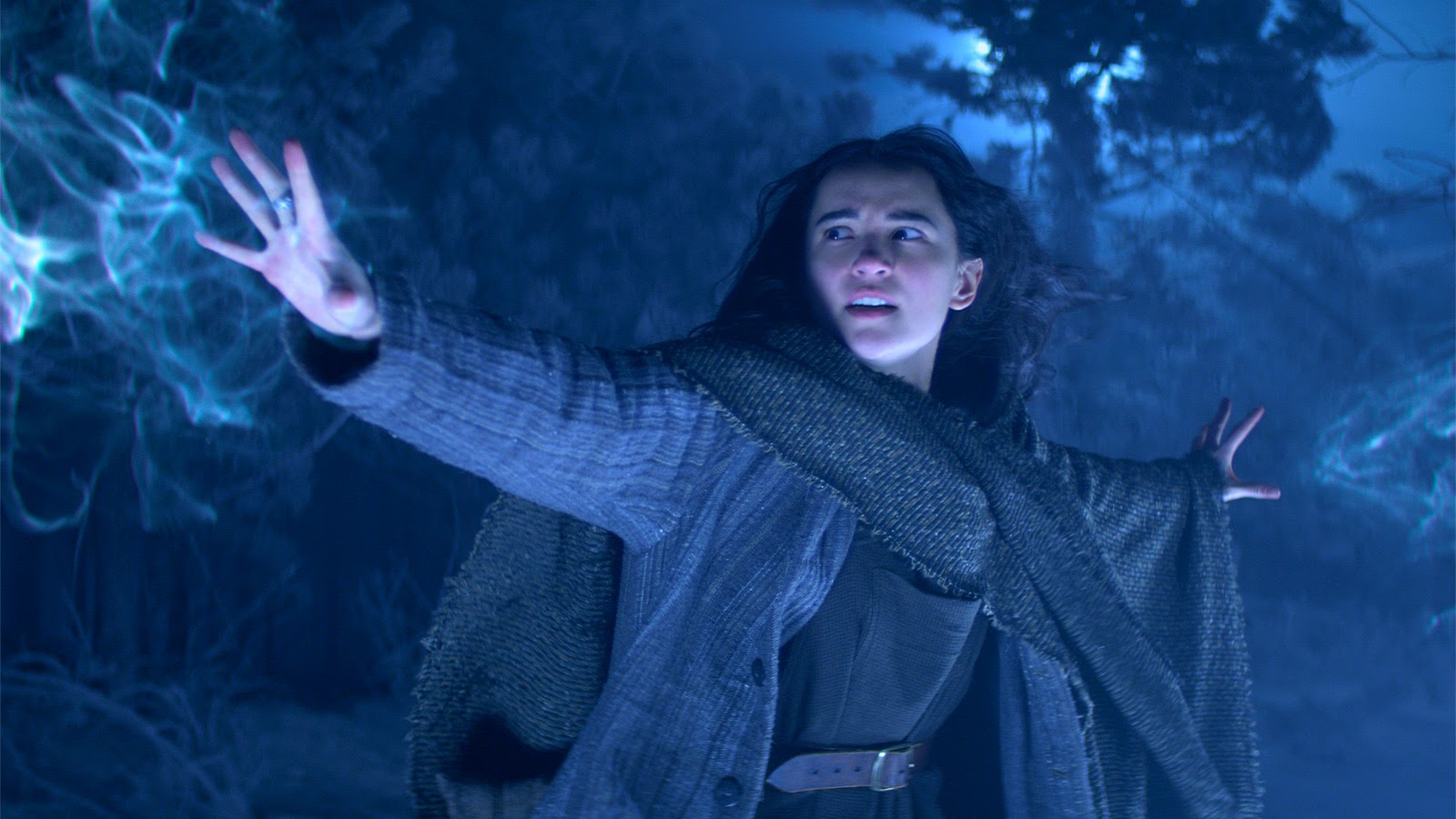
In Breaking Bad, one of the lead characters was originally going to die in the second season. They decided he was really powerful, so they completely rewrote it. I really don’t like to get bogged down with ideas from an original book or novel that has been jettisoned for a TV adaptation.
However, I probably will read it before season two kicks off.
HULLFISH: I’ve definitely heard the same idea, that you get something stuck in your head that is not the main focus of the story.
HOWIE: I feel the same about storyboards. I tend to ignore those because, again, it’s something that was just imagined and drawn out. It isn’t necessarily the way it’s been captured.
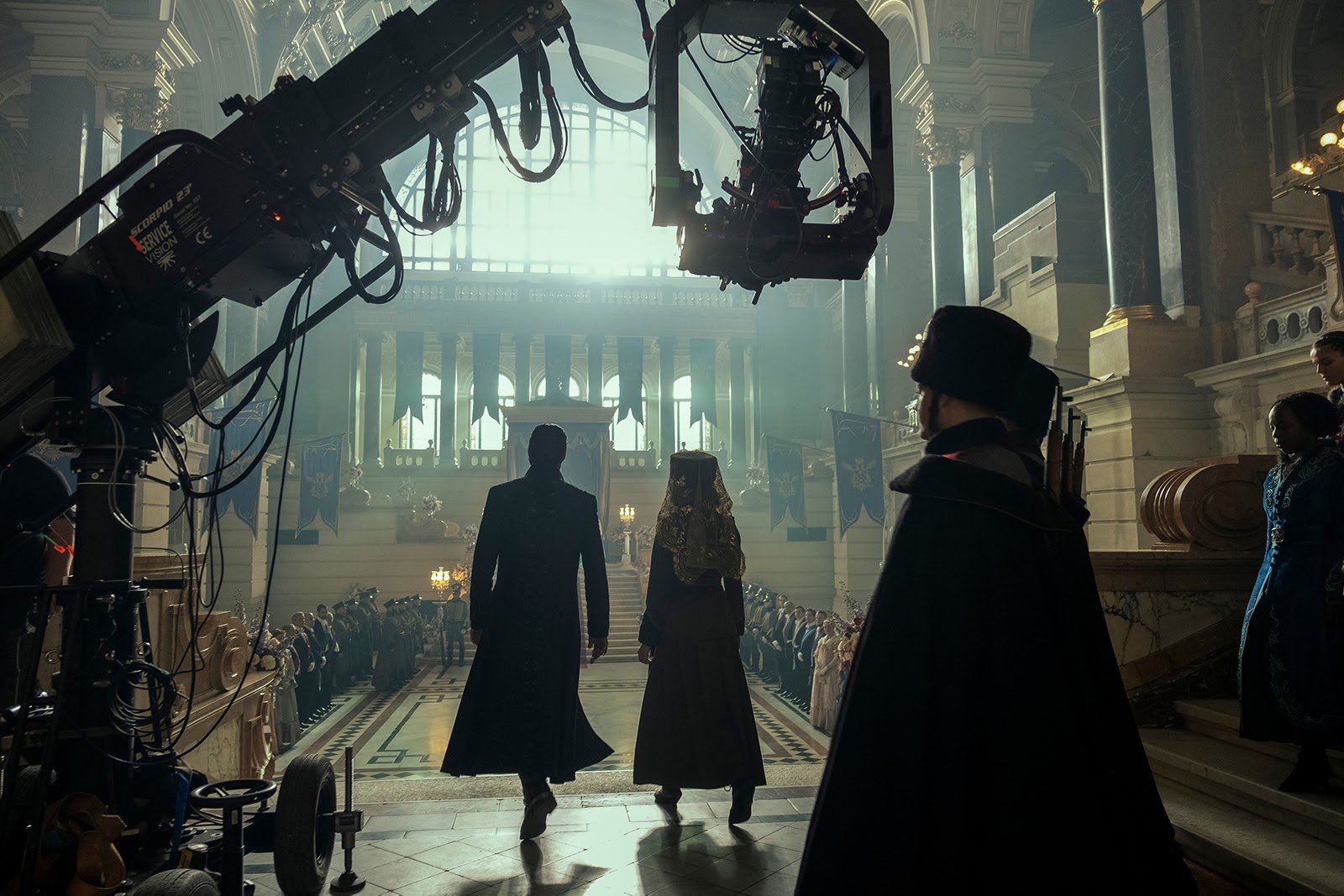
HULLFISH: One of the things that I noticed from watching this is that it’s very fantasy-oriented, similar to a Game of Thrones type of show. There’s a specific language. There’s a very unique and strange world that we do not live in. Do you have to be more cognizant of telling a clean story when you’ve got so much fantasy?
HOWIE: Definitely. You’ve got to establish world rules and locations that are completely alien to us. We often find that we have to add in ADR to help assist the audience when we go back to a location from three episodes ago to remind them where it is. You do have to put up a few more signposts for the audience. That’s something that Eric Heisserer, our show-runner, was so brilliant at. He had the whole shape of the show perfectly set out in his head.
Certainly, in my two episodes in the middle of the season, by that point the world was established. I actually had a better time than the beginning episodes because there was so much to actually develop and establish in those first few episodes. By the time we got to mine, we were off and running. Mine were a fun few episodes where we had the Crows—which are my favorite characters—actually getting on and doing some capers.
HULLFISH: I’m assuming you watched those earlier episodes before yours. What kind of interaction was there between the editing team?
HOWIE: I was already editing my episode before I got to see episode one. They were quite protective of it because it hadn’t been shown to the network. Once it had been shown to the network, then we had this big screening where we all went in one room and watched it all together. That was very helpful. To begin with, we were just working in isolation.
Many of Shadow and Bone’s locations are in Budapest, including the grand Buda Castle.
HULLFISH: You’ve worked on feature films, and you’ve worked on TV series. How are they different?
HOWIE: Certainly, the pace of the editing is quite different. Rather than having 10 weeks with a director on a feature film, you’ve got four or five days with a director in TV. I really had to change my methodology and way of working. I’m very happy with the way I’ve managed to make shortcuts in the way that I work, yet still feel that I’ve got the best choices of performance and that I have watched every take. Although I only watch dailies once and make notes now, whereas on a feature I would probably watch them two or three times. I rather like the fast pace.
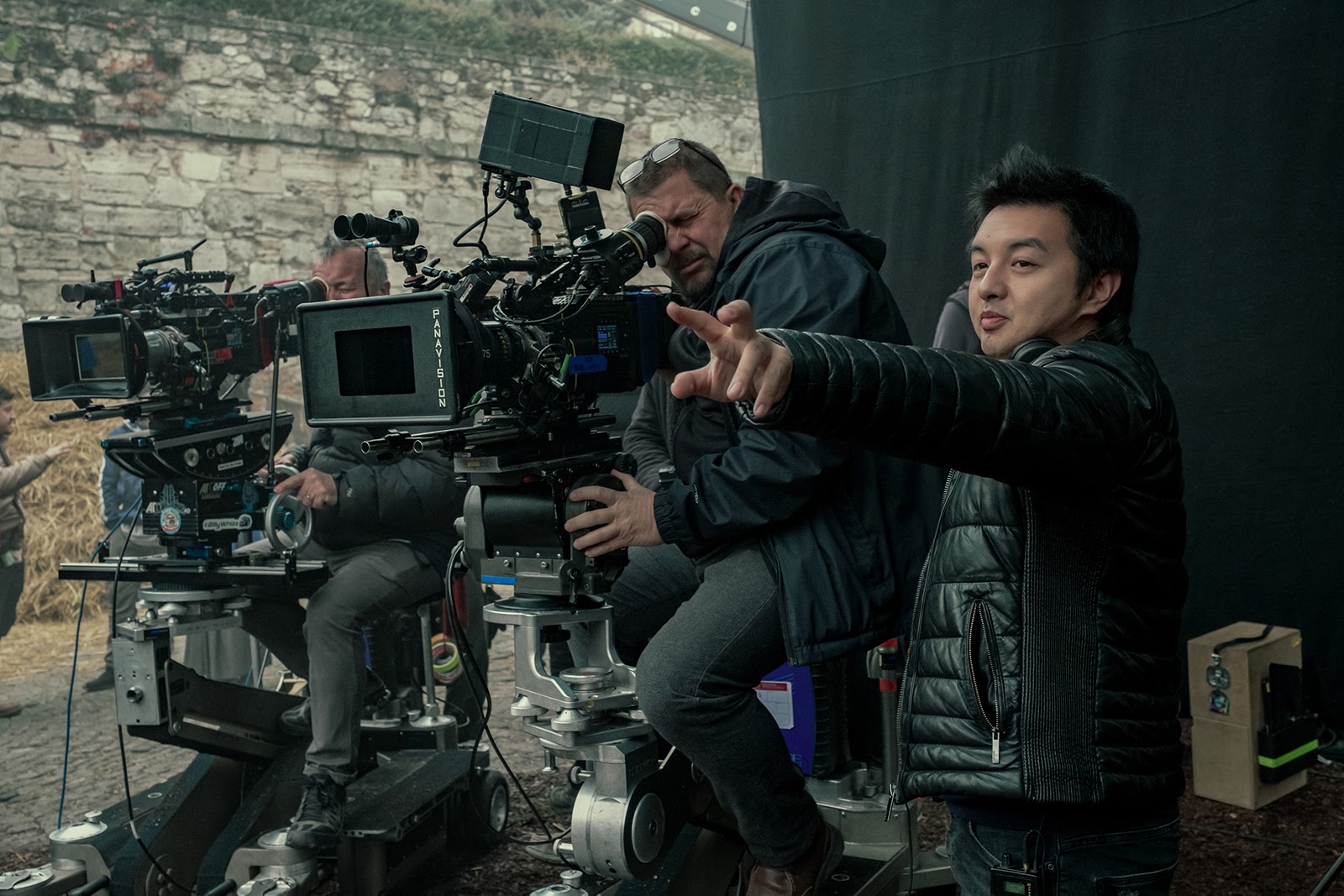
HULLFISH: Are there other things that you felt you had to change in the way you edit to be able to perform at that pace?
HOWIE: There aren’t really many changes. The main thing is viewing dailies and making notes all at once. On features, I remember we used to have dailies screenings. I used to really enjoy going to set at lunchtime and screening dailies from the previous day with the crew. I’d get insight as to things they were trying to capture, and you’d hear comments from the Director of Photography. That was quite helpful. We don’t have that nowadays, unfortunately. I would have gone back and rewatched those dailies, and then made my notes, and I would have already seen them once. That’s one difference.
There are fewer takes in TV because they really don’t have the time to shoot nine, upwards takes. There are probably more like three-to-five takes of each setup, at the most. I think it’s less to try and hold in your head, so it’s a little easier to cope with when you’re attacking a scene. You’ve got a better idea of what there is.

My methodology hasn’t changed in the way I work. I do still watch every take before I start. I know some editors who just deal with the selects, then once they’ve cut the scene they go back and check the alternatives. I really like to find what I call ‘the little magic moments,’ and often they’re in uncircled takes. Even if it’s a reaction that’s particularly good, I make a note of those and make sure I get them in my first cut. I always make sure I save my first cut because we’ll often go through various notes stages with producers, directors, showrunners, and sometimes overdevelop a scene. It’s good to go back and see what I had done originally. Quite often, the initial gut feeling was the best. I often go back to the original cut.
The director has a vision, and normally I align myself with the director because I’m trying to help them get their vision to fruition. There often becomes a little bit of a battle with the studio where they remove some slightly risky things, or something that’s unusual. There’s the usual note that the cut is too slow, which has changed in the last few years. I find that a lot of drama now has slowed right down, which is interesting. We’re more into the cinematic style, letting shots develop, which I rather like. It did get very post-MTV for a while. Everything had to be, “Quick, quick, quick. Take all the air out!”

It varies, sometimes the director’s vision is very good and solid, and you really fight for that. Sometimes the producers have a very good argument, and you mediate. My role as an editor does change depending on who I think has the best ultimate ideas for the project.
HULLFISH: You were mentioning your workflow and your methodology. How do you approach a blank timeline? After you take your initial notes looking at the dailies, what happens?
HOWIE: I really like to change it up. I like to approach a scene differently each time. Sometimes I will make a selects reel. Normally, if it’s an action scene, there’s no other way around it. If you don’t make a solid selects-cut for action, then you’re not going to get the best scene out of it. In a regular scene, I will probably pick the best take from the leads and start off with that.
Sometimes, I’ll start with the wide-shots, and then cut close-ups into it. Sometimes, I’ll start with close-ups, and then feel where I want to be wide and put wide-shots in. I like to chop and change. I don’t like to be rigid about the way I approach a scene. It’s good to keep trying different methodologies and ways of approaching scenes.
Ultimately, I probably end up with very much the same thing. I often find that when I go back and compare edits, if I re-started fresh and approached a scene a different way, the ins-and-outs would only be a frame or two off from what I had originally.
HULLFISH: Have you used the British style of slating and the American style? Tell us what the difference is, and why you prefer one over the other?
HOWIE: They both have pros and cons. For assistants, I think the British way is useful because it’s immediately obvious if you’re missing a shot. Each shot has a consecutive number, so if suddenly there’s a number missing, then obviously something has gone wrong in the process. In that regard, the British method is quite useful. I prefer the American version myself, where you’ve got the prominent scene number. There’s not a huge difference in my mind. Once the assistant’s dealt with it all, and it’s neatly in scene bins, there is not a huge difference.
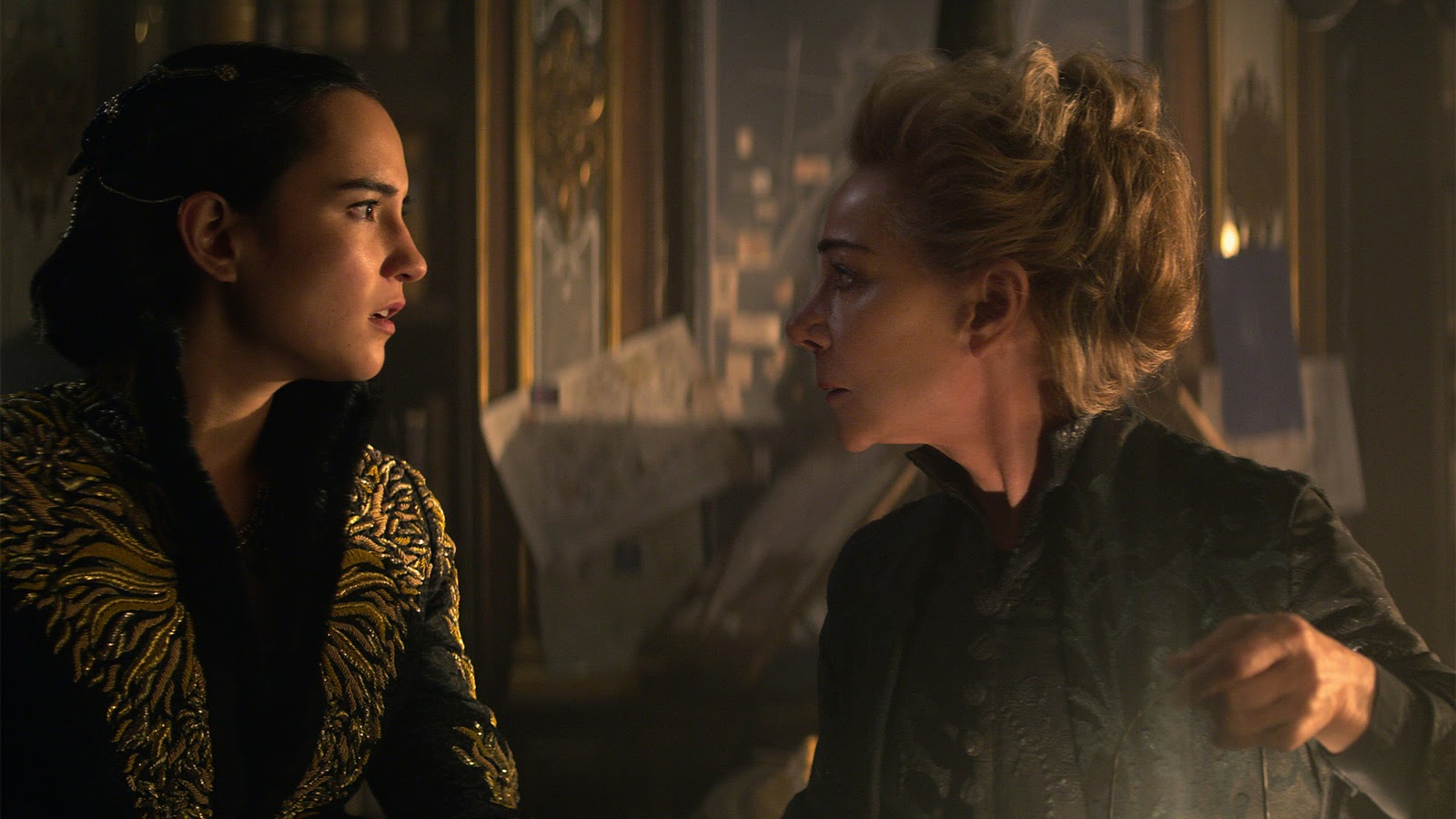
HULLFISH: Talk to me about pacing and giving breadth to a story. How do you pace an overall story, not just from cut-to-cut?
HOWIE: That just comes with experience. Certainly doing feature films, you really have to be conscious of the fact that once it gets up on the big screen, there’s a lot more real estate to watch. It takes a little longer to take in a shot because your eyes have to scan left and right, and you’re noticing details that probably on a small screen you wouldn’t notice so much. There’s a lot more subtlety to features.
Most of my unease with having to pace up is back in my feature film days. I’m not really finding that with television, but I still have that ingrained and conscious idea that a shot needs to last a certain amount of time for you to be able to really take it in properly. I’ve managed to bridge the gap between features and television, although now people have TV screens so large that I think the pace is slower because there’s a lot more to see. Especially with such high resolutions now, we’re probably seeing a higher resolution at home on a big 85” screen than we do in the cinema.
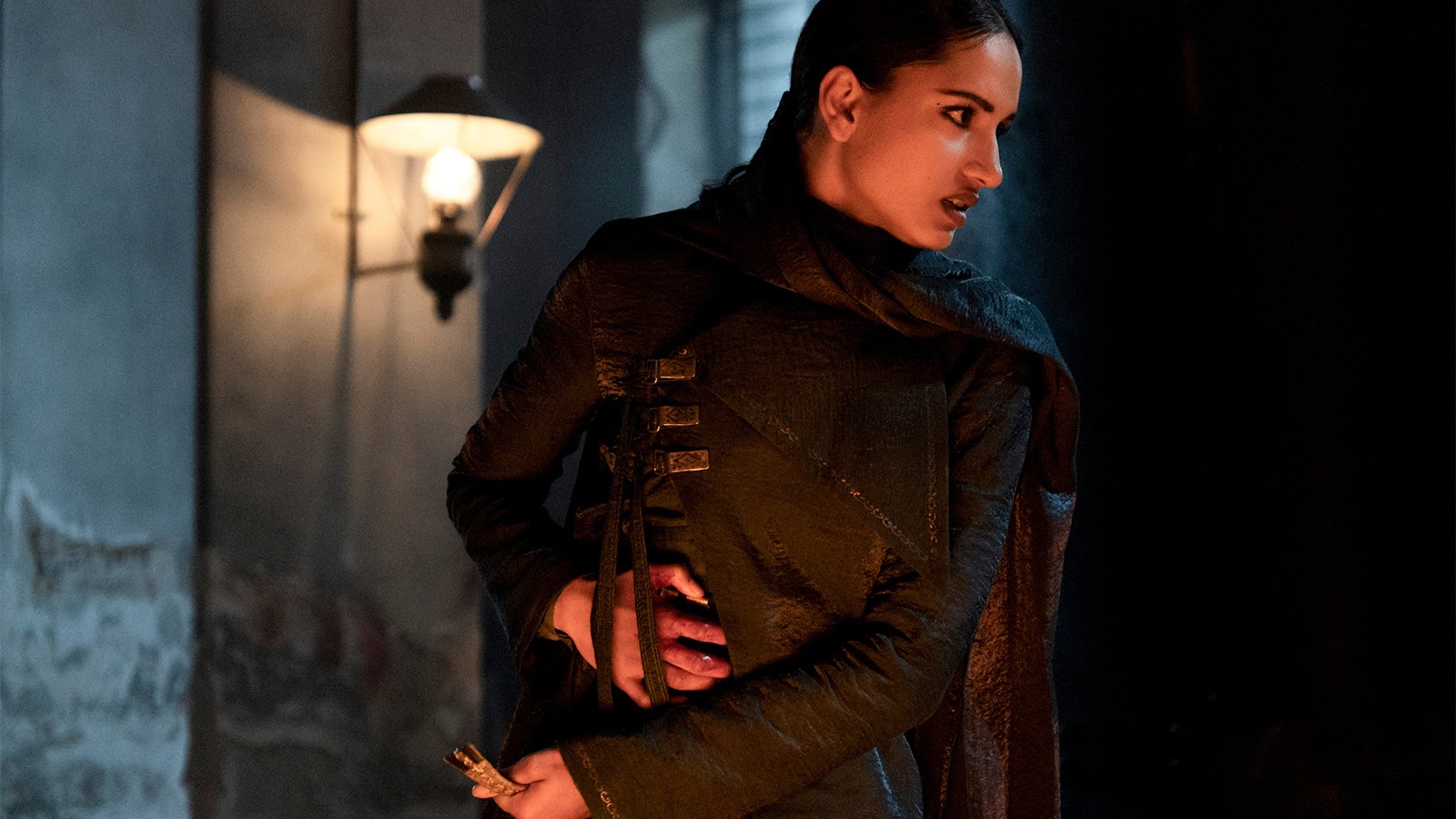
I often find that if you don’t have a good temp score, sound design, and sound effects, then the cut will be misinterpreted as ‘too slow’ by studio execs. They don’t appear to be able to imagine what it would be like with the right music and the ultimate mix.
HULLFISH: What kind of sound design do you do? Is that something you turn over to an assistant? Tell me a little bit about fleshing out a scene with sound effects.
HOWIE: If I need something basic to help me cut, I’ll drop it in. If I cut a scene in a cave, then I might just find a little sound of dripping stalactite so I feel like I’m in a cave. Otherwise, I would certainly have my assistant do that work. I really appreciate the work that goes into finding the right sounds. Then they liaise with the sound designer if there’s something specific. What does ‘the Fold’ sound like? Things like that really are beyond a normal library of sound effects.
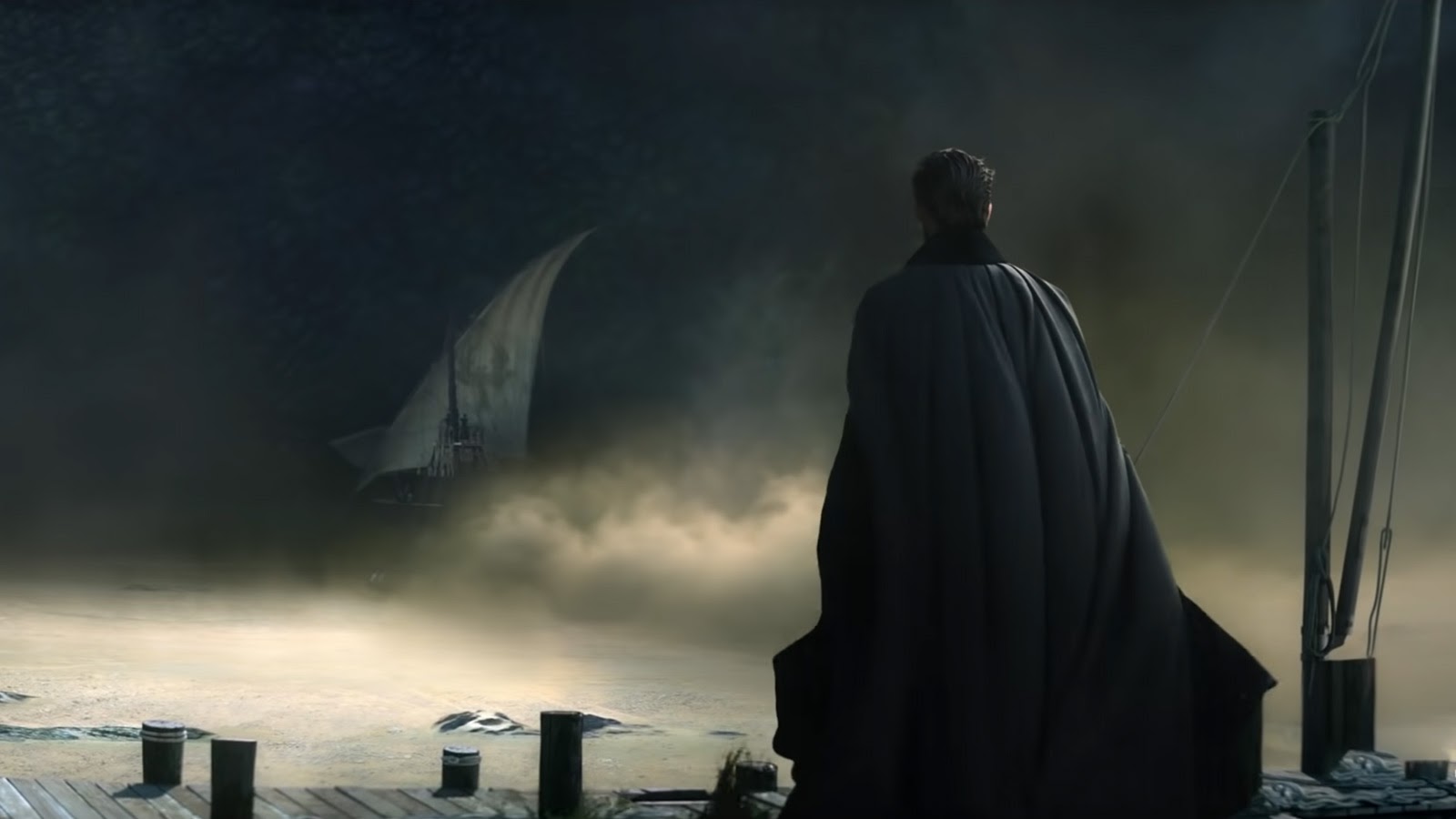
HULLFISH: Because you didn’t come up through the assistant editing path, how did you find an assistant? How do you work with an assistant?
HOWIE: Back in the early days, I was certainly assisting myself. On Lightworks, you’d have to do the whole thing on several projects. I’ve learned to adapt and make really good use of the assistant. There are certain things they do that I would have no idea how to do, I would be fingers and thumbs. I’m glad I’ve got someone that knows how to do all that. Plus, I really like having a sounding board. I often bring my assistant in to look at my first cut and get feedback. I think it’s healthy to have another pair of eyes that you can trust for an opinion.
On some projects, I’ve had my assistant in the same room as me, which I really liked. That’s something from the film days that is a shame we don’t have: that close working environment they used to have back in the film days, where assistants would be finding what they thought you would need and get it ready for you.
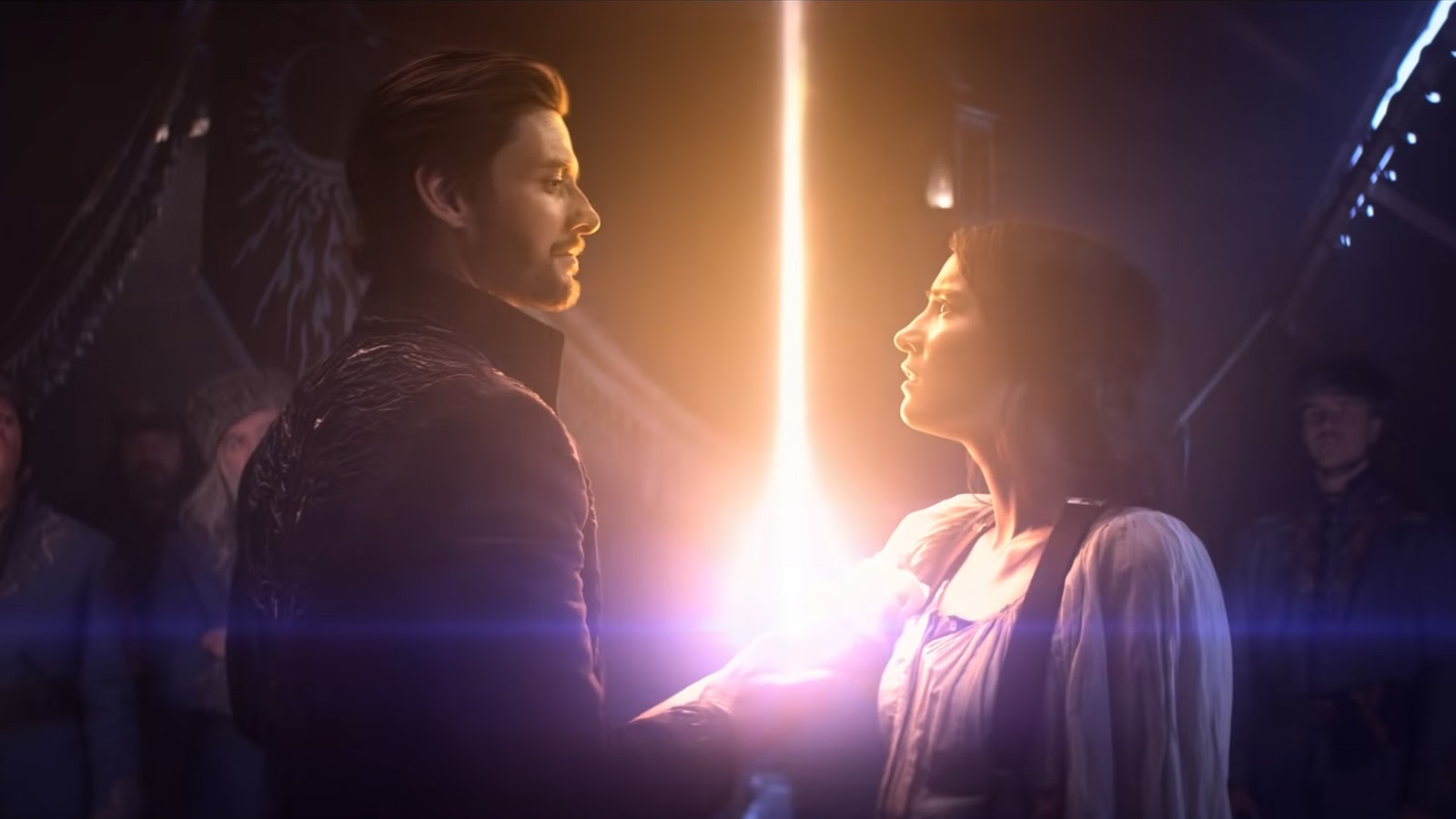
HULLFISH: What kind of screenings were there of those early cuts on Shadow and Bone? Was there anything public, or was it all an in-house screening process?
HOWIE: Nothing public as far as I’m aware. It was all in-house with our producers and the network.
HULLFISH: I’m assuming you’re cutting on Avid?
HOWIE: Yeah, I gave up with Lightworks in the mid-2000s. I worked on Avid on Dawn of the Dead.
I remember I was on machine #144 at Universal. I knew that there was no way of trying to work on Lightworks in L.A. at that time, so I switched in the early 2000s and properly gave it up around 2005.
I did love that controller, and I was super fast on it. I was definitely very quick on Lightworks. I found that controller very intuitive, and I loved the fact that it had that Steenbeck scroller that you would use to scan back and forth, rather than jump. If you scan up and down film as they used to on Moviolas, then you catch certain things, stop on them and say, “Hold on, that was useful.” Whereas jumping between markers, you’re not really having a chance to scan through footage.
HULLFISH: I know people from back in the film days who used to cut on one KEM, and they would either rewind or they’d have another KEM to the side that was just playing footage. You would catch something out of the corner of your eye and say, “Wait, what was that?”
HOWIE: I love going to the grade because it’s an opportunity to watch your cut without any sound. You can really see if the cut is working when there’s no sound, if it plays and you’re still enjoying it. That’s a good process. I know other editors who turn the color off and do all sorts of things, but I don’t do that in the cutting room.
HULLFISH: What do you think changes in the way that you view the scene when there’s no sound?
HOWIE: It’s purely action. You’re taking in the frame and camera moves. You’re really looking at movement, camera, and characters. You perhaps notice the framing a little more than you do when you’re conscious of the actual audio performance. You’re almost looking at it like a Director of Photography would, where they’re probably not so conscious of what’s been said because they’re looking at what’s in frame and whether it’s slightly off the bubble.

HULLFISH: Talk to me about using temp-score. Was there a palette that had been established before you?
HOWIE: On Shadow and Bone, we had our composer. I didn’t really know Joseph Trapanese’s scores that well, and they hadn’t been in my toolkit for temp-score. It was a bit of a learning process. I’d often have it on in the background if I was cutting an action piece and listen through to slowly get to know certain passages. We had his library of music—which is massive—and there were clearly certain tracks that felt like they would work for Shadow and Bone.
We leaned into those, but I did often put in other composers’ works in certain areas where we needed something more specific. That would be my Frankenstein’s monster of a toolkit, which contains decades of different styles of music. Often when I would cut features, it really would be a ridiculous Frankenstein’s monster of styles. You’re trying to create a mood to help with the viewer for the rough-cut, but also for the composer to go and improve them.
HULLFISH: What are some other things about Shadow and Bone that we can talk about in regards to story, or in regards to the structure? Did the structure change, or were the cuts close to the script?
HOWIE: My two episodes introduced two new characters, and we juggled those scenes a lot. We tried introducing the characters at different points within my block. We also had some pickup shoots with a few scenes for some of the early episodes to help flesh out characters, and also to help with some of the story in my episodes. Yes, it did change. Not dramatically, but in one of my episodes I really had to work with a board full of scene stills because we juggled it completely. If you look at the scene order compared to the script, it was like someone had shuffled the cards.

HULLFISH: What were the things that made you feel like that was necessary?
HOWIE: There were a few obvious things where there were errors. There was one scene where the guard comes in and speaks to Baghra and gives her some information that hadn’t happened. It was mainly intercutting characters. In my episodes in particular, we’re going from various different environments. You’ve got Alina and Mal on their journey, Kirigan with his crowd, and then the Crows. They’re all in separate locations, so it really could be juggled. We had to keep it feeling like you’re tuning into each one, but at a good point where you’re not away from them for too long. There’s always the worry that characters disappear and you’ve forgotten them. Some of it was making sure that we didn’t lose Alina or Mal and concentrate too much on the Crows. A lot of it was feeling where we needed to catch up with a character, to come back and find out what they were up to.
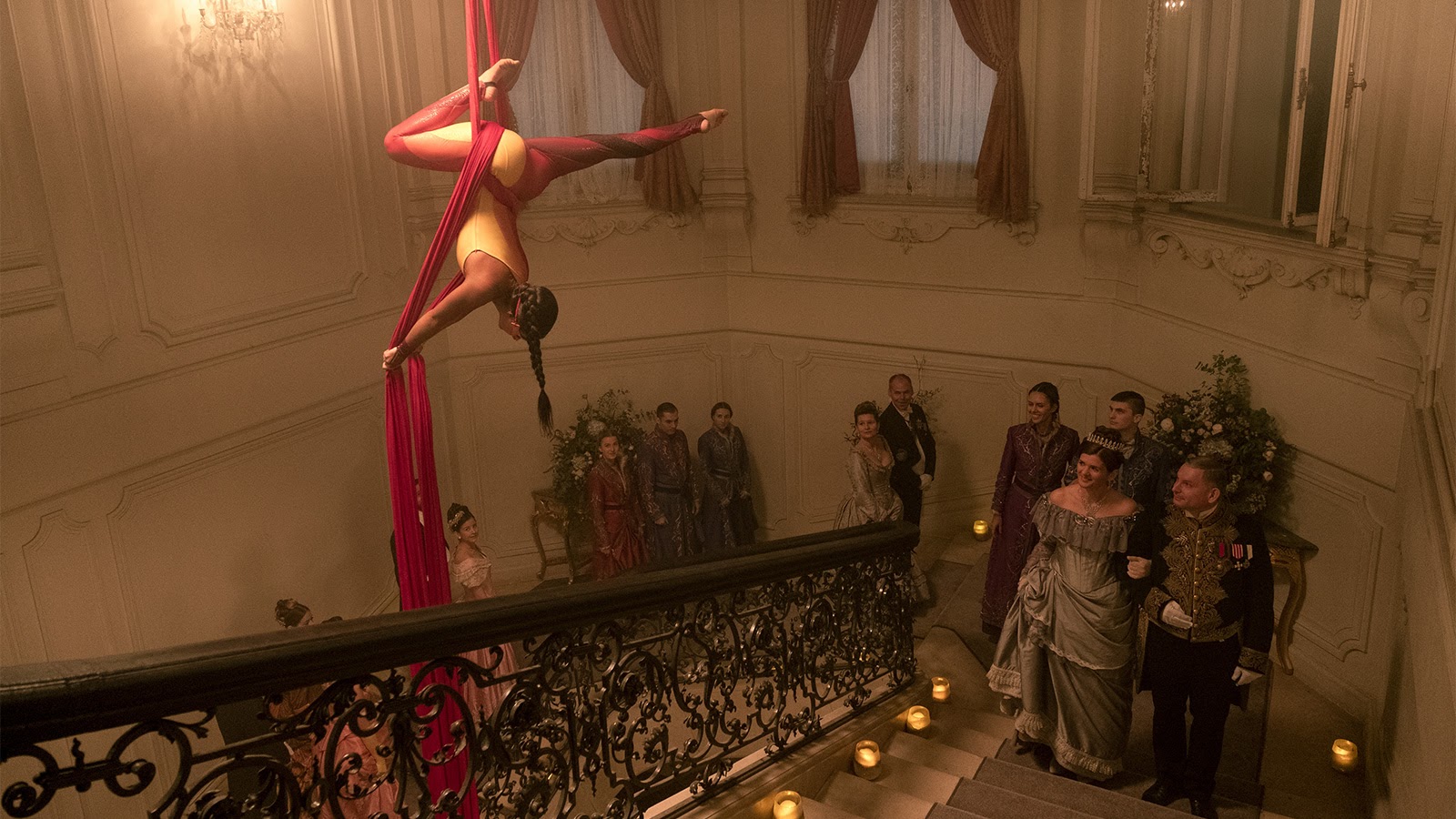
HULLFISH: As you did that juggling, were there any interesting juxtapositions? Moments where you thought, “This is great because now the transition from this scene to this scene that was not planned is much cooler.”
HOWIE: Definitely. I remember there were a few where we went straight from Alina to Mal, and that was a very happy accident because, emotionally, she’s thinking about him, and he’s thinking about her. They weren’t together, and we were cutting from her to the Crows. Suddenly, we would cut from her straight to a scene with Mal. You’re invested in them, they’re trying to find one another, so those were very fortunate accidents that happened from the juggle.

I realized that before I even had the director come in, so I’d already done quite a lot of juggling. We did do more once Mairzee Almas came in and joined us. I had all the same cards on the wall so that we could visualize where everything was. We continued to try a few different movements of scenes and structure.
HULLFISH: You changed things before you showed the director the editor’s cut? Do you do anything to prepare your director for that?
HOWIE: I’d warned them. One thing I won’t usually do is take lines out before I show the director. I’ll sometimes say, “I’ve taken a line or two out. I can show them to you if you’d like, but I’m sure you will agree.” You’ve only got four days with them, so you need to hit them with your best shot.
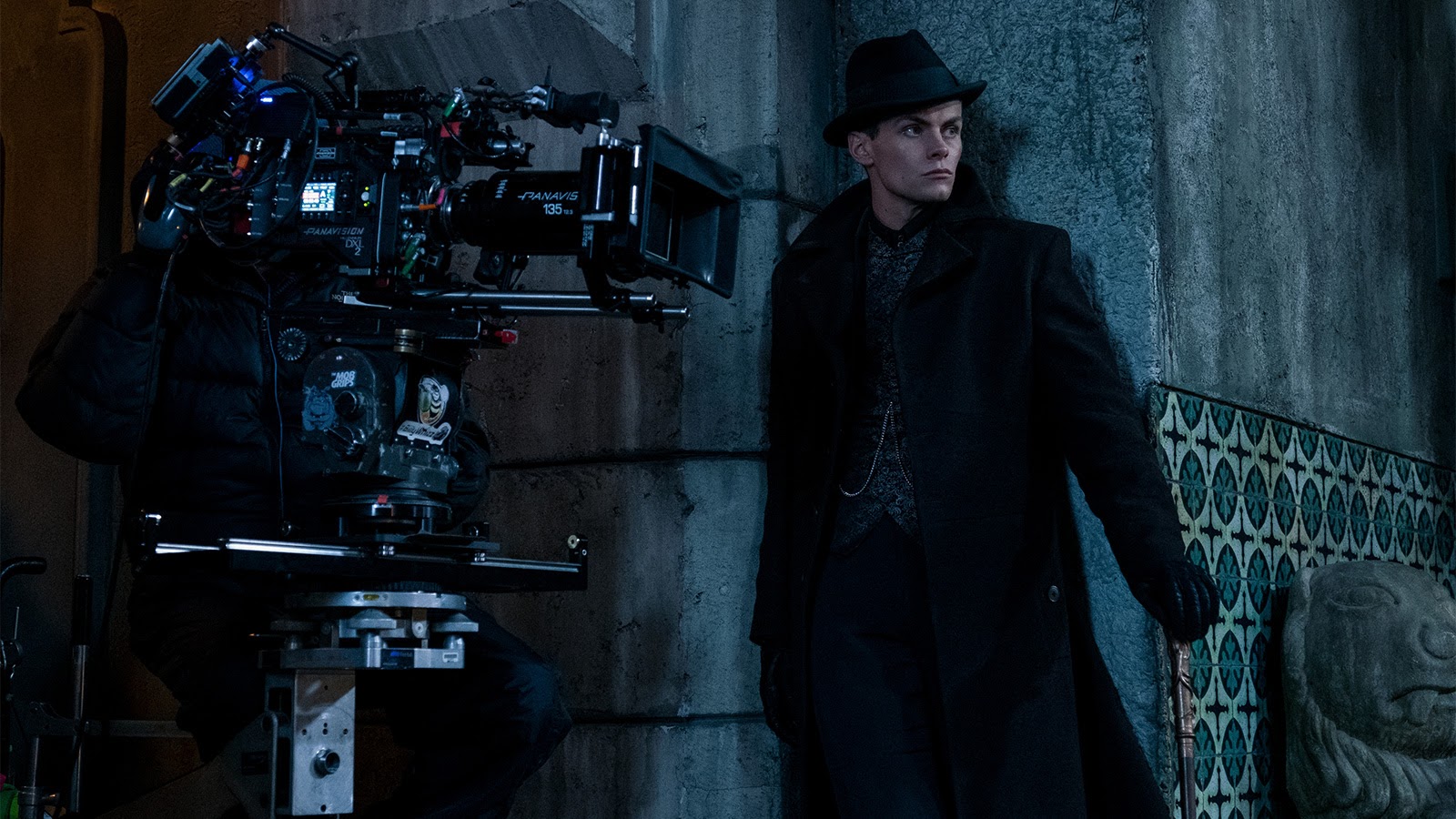
HULLFISH: That’s one way that features are probably a little different than TV.
HOWIE: I don’t think I would do that on a feature. I would show them a cut as scripted.
HULLFISH: I wanted to ask you about judging editing. It’s such a difficult thing to do when you see somebody else’s editing. How do you judge that?
HOWIE: It’s very difficult. There was an editor who was asked by BAFTA to be on a judging panel for best editing, and he said, “If you want me to judge the editing on a feature, I want to see the editor’s assembly and the final cut.” Because it is impossible to see what processes they went through.
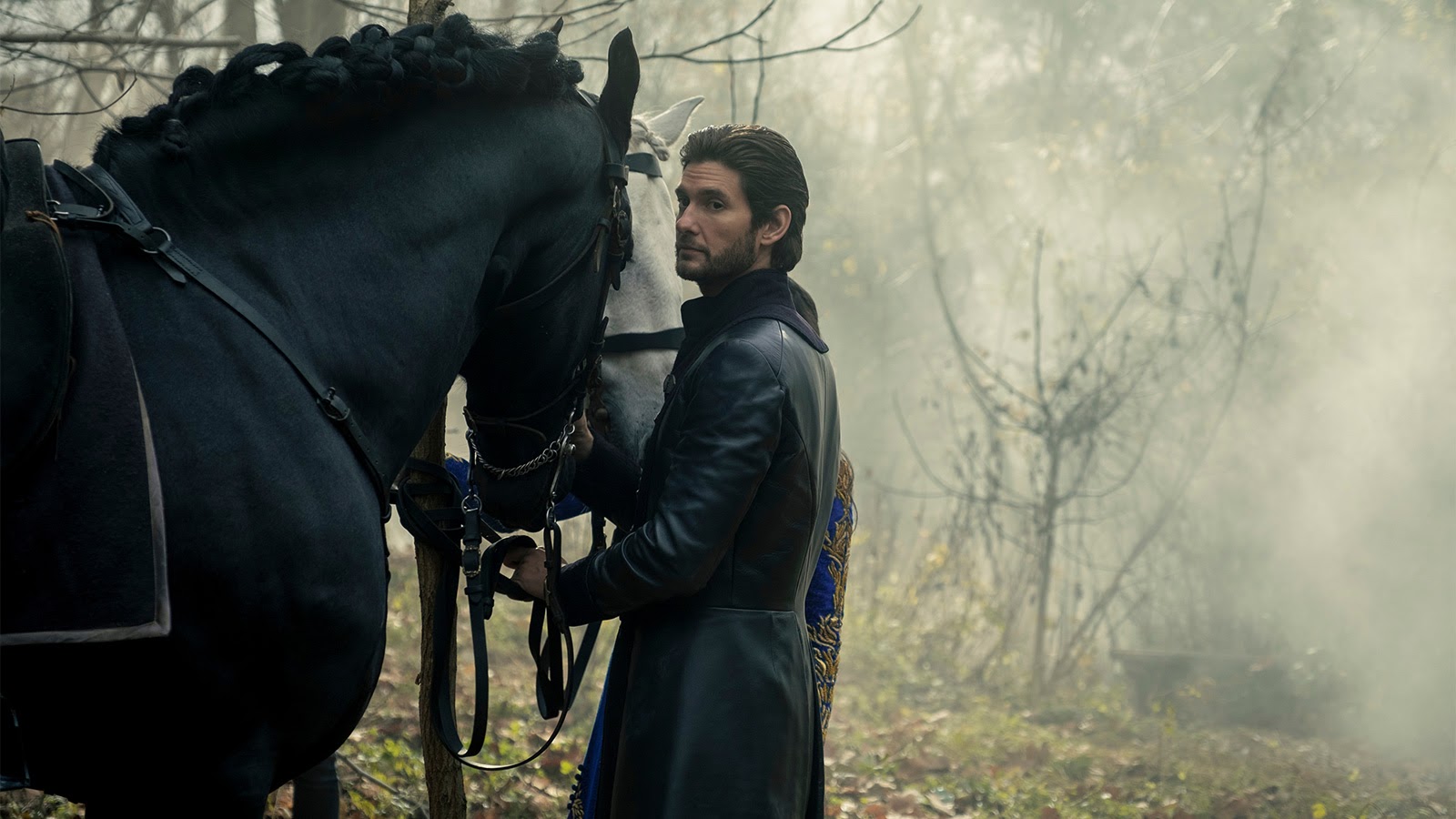
Lock, Stock and Two Smoking Barrels was a very different film than what we first screened for a test audience. It had another character in it that we removed. It had a totally different ending. It’s very hard to tell how much impact an editor has had on a production. You can see basic cutting style and whether you feel they’ve held onto shots too long or made jarring cuts that take you out—that’s something I can judge.
For me, the real test is if I stop watching it as an editor, and I’m a punter. I’m able to take my editor’s hat off if the editing is good.
HULLFISH: Is there anything else you want to talk about regarding Shadow and Bone, or editing in general?
HOWIE: Only that I could tell very early on that there was something special here, and the team was such a lovely team. Very early on, we were forced to go home and work remotely. I said, “I’m loving this series. I’d love to stay on it if you need an editor to see it through to the end.” Editors were starting to leave and were brought onto other projects. I was offered a pilot, but I said, “I’d prefer to stay on this. Can you tell me if you want me? I’ll turn down this pilot.”

They guaranteed that they did. That was before COVID-19 hit, so I was very fortunate to be working on Shadow and Bone right through to the end of the year. I loved working with Eric and Ted, the visual effects supervisor, and everyone on the team. I think 21 Laps were very good on this as well, that was our production company.
HULLFISH: Who was your assistant editor?
HOWIE: My son, Chester. He’s been my assistant editor for a few years now, and he’s brilliant. He knows my likes and dislikes, and we’ve got a shorthand. He’s very, very good.
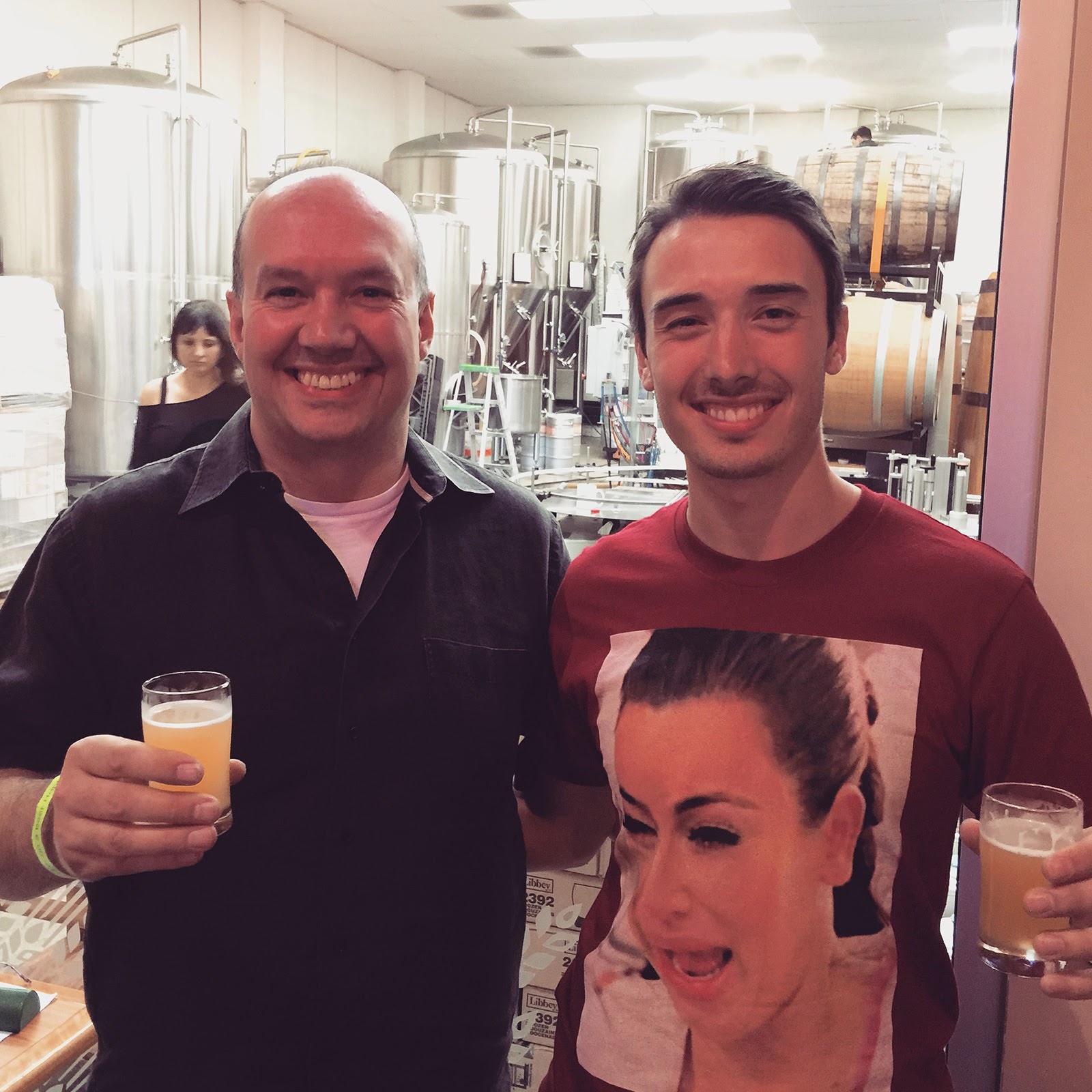
HULLFISH: You mentioned that some of this production was cut at home remotely. Tell me a little bit about that workflow. How do you think the pandemic has changed the post-production workflow?
HOWIE: We’ve proved that you can do it. It’s not as enjoyable an experience for me. It’s great to physically be in the same place. One thing I remember from test screenings is that I always enjoyed seeing how people shuffled in the seats in the cinema. You can read an audience not just audibly, but also from their movements, whether they’re tucking into their popcorn or glued to the screen. That physical presence is very useful for screenings, but other than that we could really do everything remotely with Evercast as long as you’ve got fast enough internet.
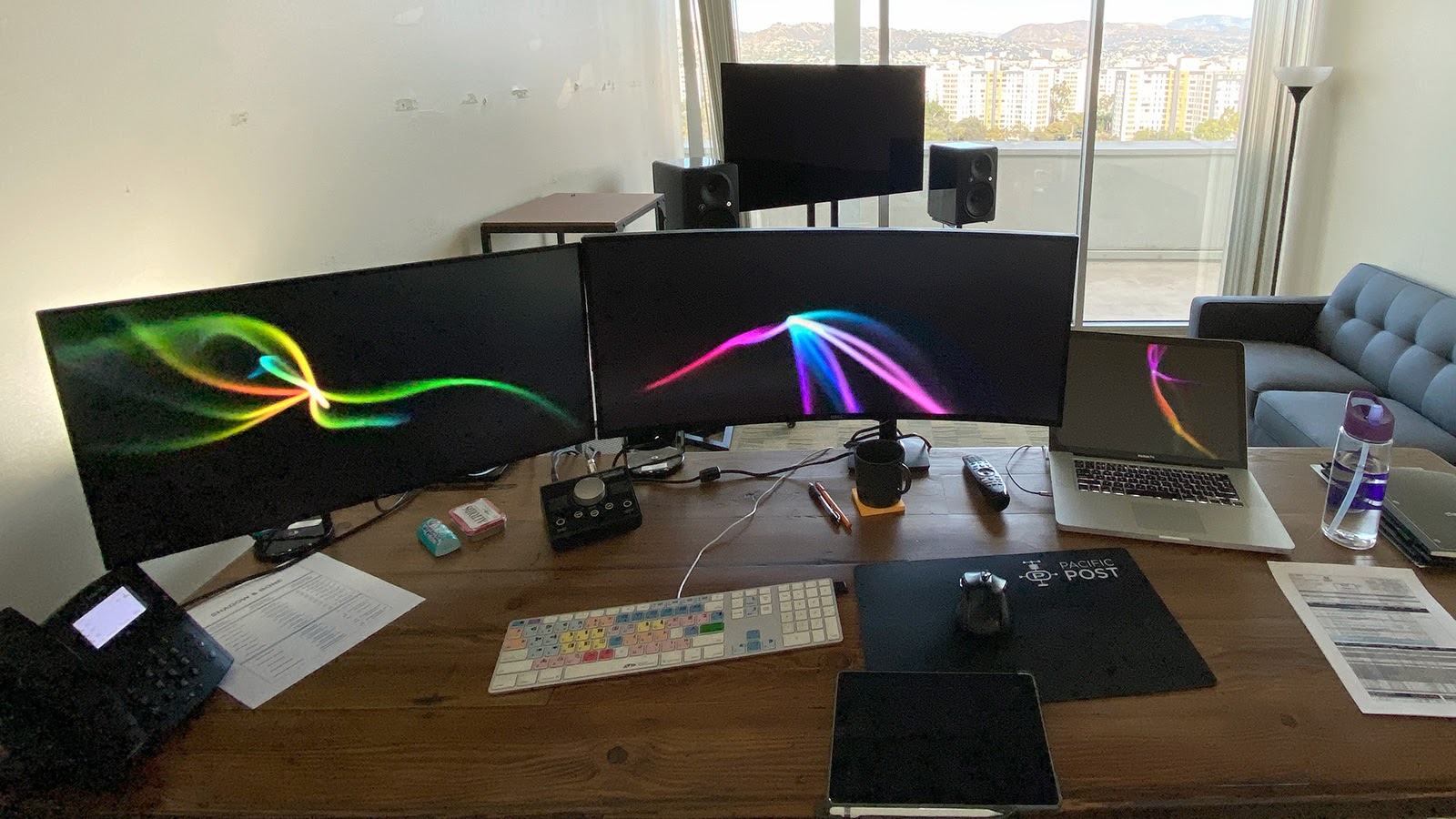
HULLFISH: What did you use on Shadow and Bone?
HOWIE: We used Evercast. I think we switched to PacPost.live at the very end, which was just as good. I did love Evercast, I think it’s a brilliant system. I set up my own little system for streaming using a Black Magic box.
One thing I did do—which a lot of editors haven’t been able to do because I’ve got my son as my assistant—is I installed shared storage. We could share media and projects, which was a huge advantage over editors separated from their assistants. I experienced that for the first few months before I installed the shared storage, and it wasn’t fun.
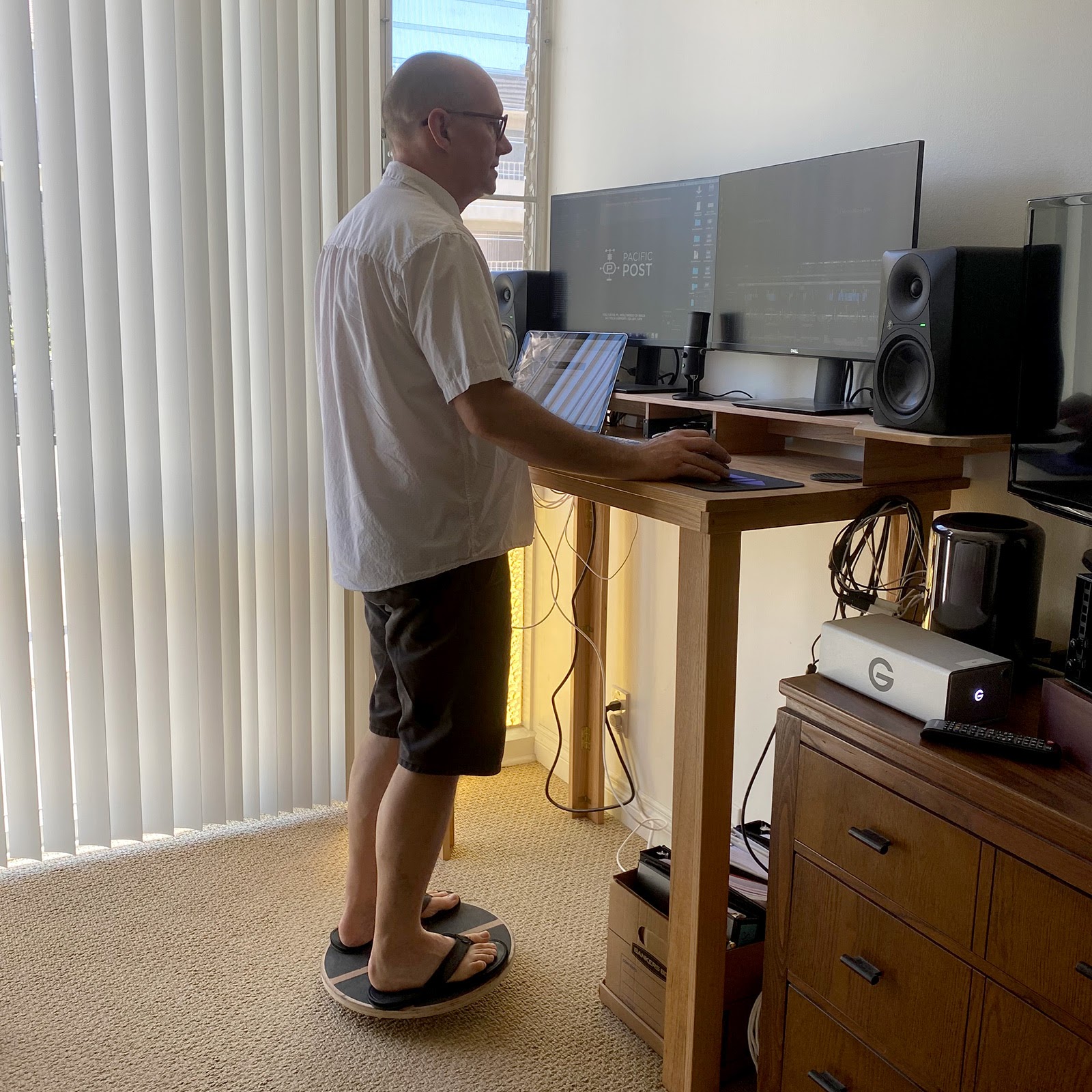
HULLFISH: What shared storage solution did you use?
HOWIE: I’ve got a QNAP with Mimiq licenses.
HULLFISH: Mimiq helps you with bin locking, correct?
HOWIE: Yes, and it works perfectly. It’s really good.
HULLFISH: Niven, thank you so much for joining me. I hope people get a chance to check out Shadow and Bone. If you’re missing Game of Thrones, this is a great fantasy series.
HOWIE: Absolutely. It has a great cast, and it’s beautifully photographed with fantastic costumes. I really hope that it gets recognized for many of the categories. It was a great series to work on.
HULLFISH: Well, good luck to you, and we’ll see how the Emmys go.
HOWIE: Thank you very much, Steve.

